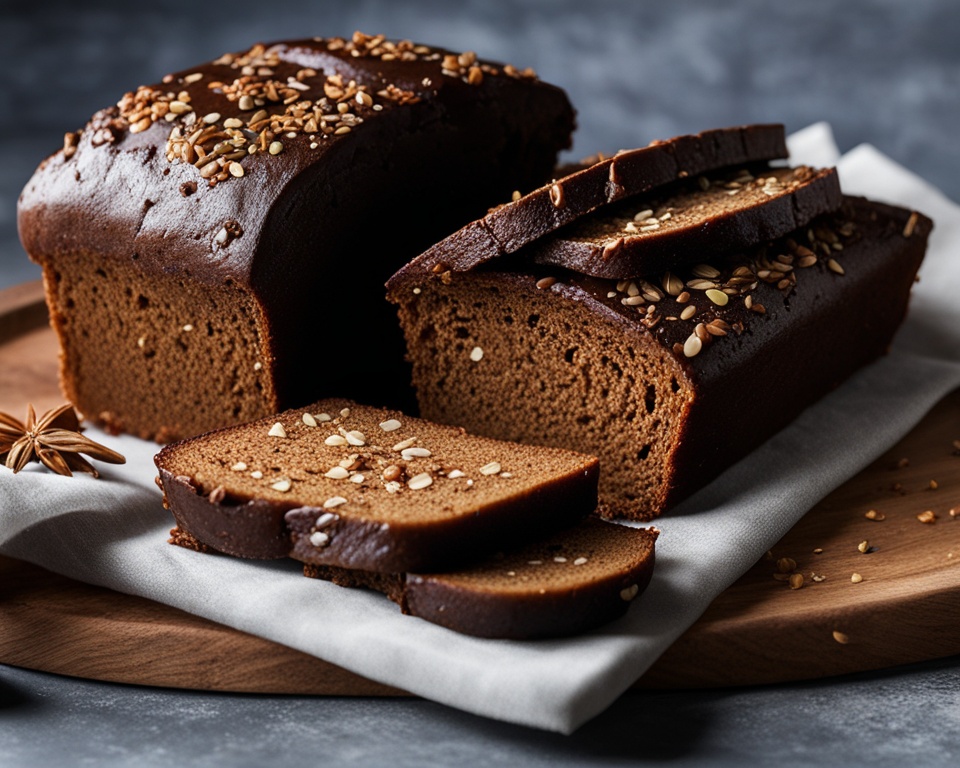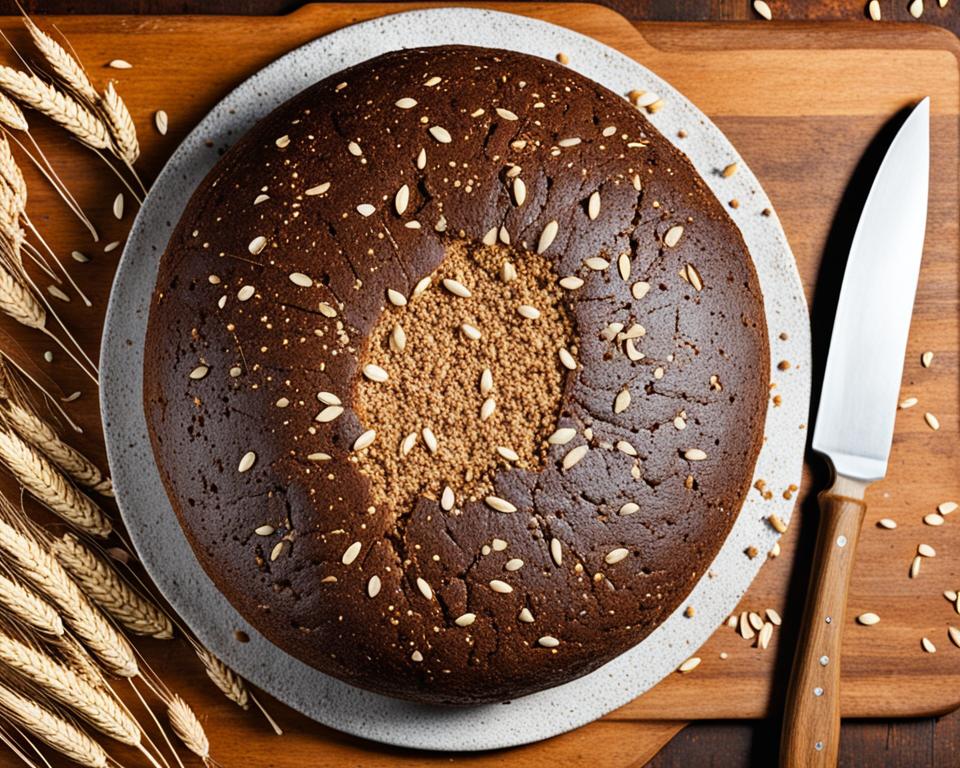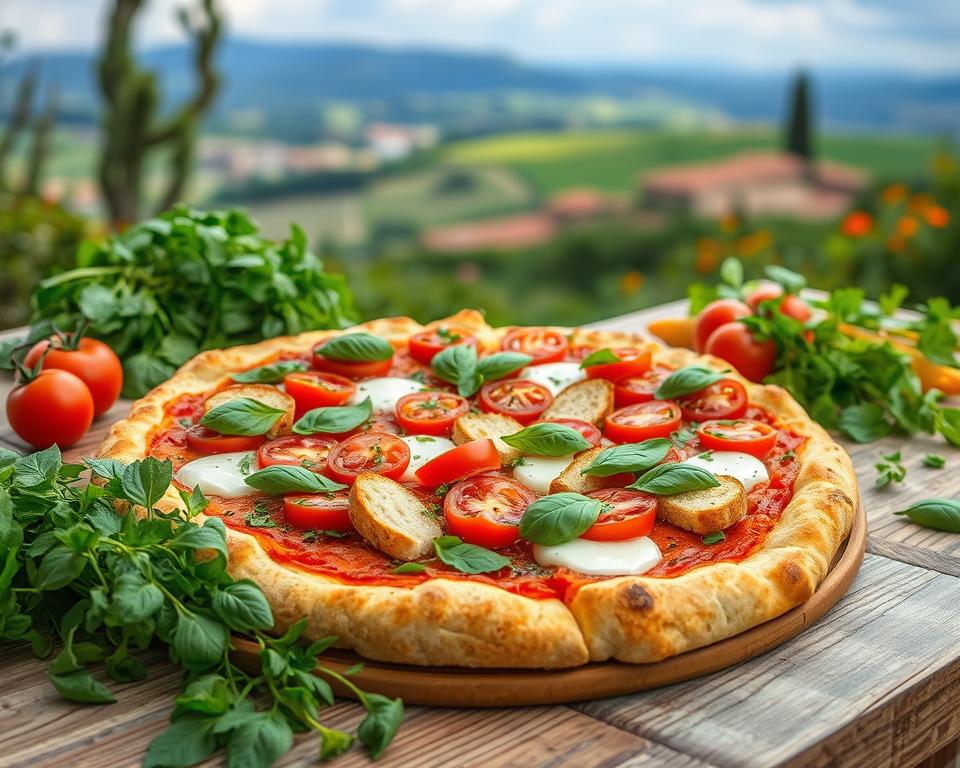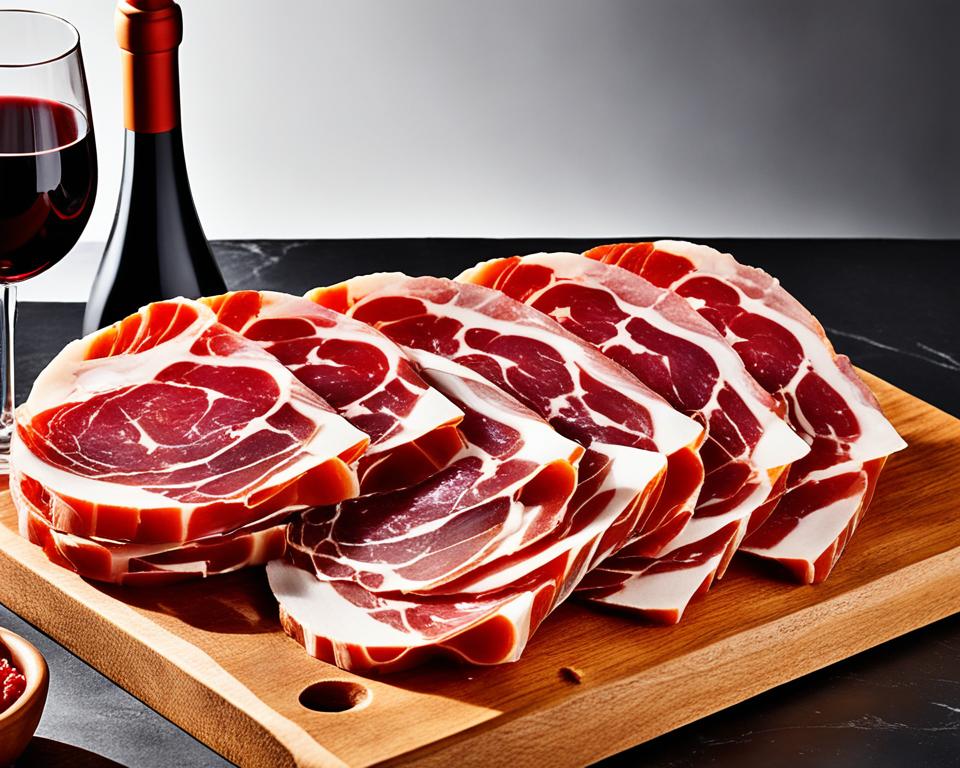Pumpernickel is a dense and flavorful rye bread from Germany. It’s a staple in German cuisine and culture. This bread has a rich history and a unique way of making it. Its dark color, chewy texture, and taste like molasses make it special.
This article will take you into the world of pumpernickel. You’ll learn about its origins, main ingredients, and traditional German baking methods. You’ll see how it’s full of nutrients and how it’s important in German food and traditions.
Read interesting things at : climbing-gym-oz
Key Takeaways
- Pumpernickel is a dense, dark rye bread that originated in Germany.
- The bread’s distinctive flavor and texture are the result of a unique, lengthy baking process.
- Pumpernickel is made from whole rye grains and a sourdough starter, giving it a high fiber and nutrient content.
- This hearty bread has become a beloved part of German cuisine and culture, with regional variations across the country.
- Pumpernickel’s dense, chewy texture and molasses-like taste make it a versatile ingredient in a variety of German dishes and recipes.
What is Pumpernickel Bread?
Pumpernickel is a special type of rye bread from German cuisine. It has been around since the 17th century. This bread is dense and dark, with a unique taste that makes it stand out.
Origins and History of Pumpernickel
Pumpernickel started in Westphalia, Germany, as a way to use leftover rye grains. The name comes from “Pumpern” (to break wind) and “Nickel” (a mischievous spirit). This was because the bread was known to cause digestive issues.
The way to make pumpernickel changed over time. A slow, low-temperature cooking method created its unique flavor and texture. This method is key to traditional German pumpernickel, making the rye flour into a dense, moist, and flavorful loaf.
Key Ingredients and Flavors
Pumpernickel bread is made with rye flour, sourdough starter, and whole grains. Rye flour gives it a deep, earthy taste. The sourdough adds a subtle tanginess. Whole grains make the bread chewy and nutty.
The slow baking process is important for pumpernickel’s flavors. It makes the bread slightly sweet, with a taste like molasses. This mix of flavors and the bread’s dense, moist texture makes pumpernickel a favorite in German cuisine.
“Pumpernickel is a bread that has been a part of German culture for centuries, with its origins rooted in the resourcefulness and ingenuity of bakers in the Westphalia region.”
Traditional German Pumpernickel Baking Process
In German bakeries, making pumpernickel bread is a detailed process passed down through generations. This artisan loaf is famous for its unique, dense texture. This comes from the special techniques used by German bakers.
The first step in making pumpernickel is using special ovens with stone walls. These ovens keep a steady, low heat. Baking takes up to 24 hours, making the bread moist and dense.
- The dough mixes rye flour, water, and a sourdough starter. This mix is carefully looked after for the best flavor.
- After shaping, the loaves go into the stone ovens. They bake slowly, often at 200°F (93°C).
- As the bread bakes, its sugars caramelize. This gives it a molasses-like flavor loved in traditional pumpernickel.
This careful process makes German pumpernickel stand out. It’s not just good-looking but also tastes complex and satisfying. The slow baking shows the hard work and skill of traditional German bakers. They’ve made this artisan loaf perfect over many years.
| Step | Description |
|---|---|
| Dough Preparation | Rye flour, water, and a carefully tended sourdough starter are combined to create the pumpernickel dough. |
| Baking | The shaped loaves are placed in specialized stone-lined ovens and baked at a low temperature, often for up to 24 hours. |
| Caramelization | The extended baking time allows the bread’s natural sugars to caramelize, resulting in the distinctive molasses-like flavor. |
“The traditional German pumpernickel baking process is a true testament to the dedication and skill of our bakers, who have perfected this iconic artisan loaf over generations.”
Nutritional Benefits of Pumpernickel
Pumpernickel bread is known for its great nutritional value. It’s a smart pick for those looking for a nutritious and satisfying bread. Its main ingredient, whole rye grains, is the key to its nutritional benefits.
Whole Grains and Fiber Content
Pumpernickel uses whole rye grains, unlike many other breads that use refined flours. These grains are full of nutrients, fiber, and complex carbohydrates. The bread’s fiber content gets a boost from its slow baking process. This makes it a great choice for a healthy diet.
| Nutrient | Amount per Slice (28g) |
|---|---|
| Calories | 80 |
| Carbohydrates | 16g |
| Fiber | 3g |
| Protein | 3g |
Pumpernickel for Digestive Health
The fiber content in pumpernickel bread is great for digestive health. Its slow-acting carbs and soluble fiber help control blood sugar, keep you feeling full, and feed the good gut bacteria. These bacteria are key for your overall health.
“Pumpernickel’s unique composition and baking process make it a nutritional powerhouse, providing a wealth of health benefits for those seeking a wholesome, fiber-rich bread option.”
Adding pumpernickel to your diet brings many nutritional benefits. You get the goodness of whole grains, fiber, and better digestive health.
Varieties and Styles of Pumpernickel Bread
The traditional German pumpernickel is well-known, but there are many other versions too. Over time, new recipes and techniques have come along. This has made the world of pumpernickel more exciting for everyone.
Classic German Pumpernickel
The true pumpernickel comes from Germany and has been loved for centuries. It’s made with coarse rye flour, giving it a dense, dark look and a unique taste. The slow baking makes the sugars caramelize, creating a sweet, molasses-like flavor and a chewy texture.
Modern Variations and Blends
Today, bakers are still honoring the pumpernickel tradition but also trying new things. They mix rye with other grains like whole wheat or spelt for different tastes. Some add nuts, seeds, or dried fruits for looks and texture.
Even with all these changes, the focus is still on quality and traditional methods. This keeps the true spirit of pumpernickel alive.
“Pumpernickel is a bread that has stood the test of time, and its versatility allows it to continue evolving to meet the preferences of modern consumers.”
Pumpernickel in German Cuisine and Culture
Pumpernickel, the iconic German bread, is a big part of German food and culture. It’s a hearty, dark loaf that symbolizes German heritage. It’s deeply tied to the country’s food and social customs.
In traditional German cooking, pumpernickel is key in many dishes. It’s in the classic Labskaus, a stew with salted meat, potatoes, and pumpernickel. It’s also on the Brotzeit, a platter with cold cuts, cheeses, and pumpernickel slices.
Pumpernickel means more than just food in Germany. At social events, a fresh pumpernickel loaf shows the deep traditions and values of the German people. Sharing a slice is a way to show hospitality and connect with cultural roots.
“Pumpernickel is more than just a bread in Germany; it’s a symbol of our country’s rich culinary history and the pride we take in our traditions.”
Today, pumpernickel still stands as a symbol of German cuisine and German culture. It’s a cherished culinary tradition that goes beyond just eating.
How to Enjoy Pumpernickel Bread
Pumpernickel’s unique taste and dense texture make it great for many dishes. You can use it as a base for toppings or as the main ingredient in recipes. This German bread brings a special touch to your meals.
Pairing with Toppings and Spreads
The strong flavor of pumpernickel goes well with many toppings and spreads. Try it with creamy cheeses like brie or gouda, or smoked meats like salmon or prosciutto. For a classic taste, spread it with butter or tangy cream cheese.
For those who like to try new things, pumpernickel is great with bold condiments like mustard or horseradish.
Recipes Featuring Pumpernickel
Pumpernickel is perfect for recipes that need a hearty bread. Use it in dishes like pumpernickel and smoked salmon canapés or a pumpernickel and turkey stuffing. Or, for something sweet, make a bread pudding with it or use it for croutons in a healthy salad.
Enjoying pumpernickel is a unique experience. Its versatility and strong taste make it a must-try for anyone wanting to explore new breads.
Artisanal Bakeries and Pumpernickel Loaves
In recent years, the pumpernickel loaf has become more popular. This is thanks to artisanal bakeries around the world. They keep alive the German bakery traditions. They use old techniques and pay close attention to every detail.
These bakeries are found in small towns and big cities. They’re changing how we see this German classic. They use the best ingredients and careful baking. This makes their pumpernickel loaves look great and taste amazing.
Artisanal pumpernickel is all about respecting its heritage. Bakers are proud to bring out the nutty, sweet flavors that make pumpernickel special.
“The true essence of pumpernickel is in the slow, careful process of baking. It’s a labor of love that requires patience and attention to detail at every step.”
These bakeries are not just making bread. They’re keeping German culinary traditions alive. They make sure this bread stays loved by bread lovers for years to come.
Pumpernickel Bread’s Dense Texture
Pumpernickel bread is known for its dense, almost cake-like texture. This makes it stand out from other breads. It also makes the bread feel hearty and satisfying when you eat it. But what makes it so dense?
Factors Contributing to Density
Rye flour is a big reason why pumpernickel is so dense. Rye flour has a lot of protein and starch. This makes the bread denser and more compact than bread made with wheat flour. Also, baking it for a long time helps the rye flour to fully gelatinize. This makes the bread dense and chewy.
Using a sourdough starter is another important factor. The lactic acid from fermentation breaks down the starches and proteins in the rye flour. This makes the bread dense and chewy. The longer fermentation also gives the pumpernickel a deeper flavor.
| Factor | Impact on Pumpernickel’s Density |
|---|---|
| Rye Flour | High protein and starch content leads to a denser crumb structure |
| Long Baking Process | Allows for full gelatinization of rye flour, resulting in a chewy texture |
| Sourdough Starter | Fermentation breakdown of starches and proteins contributes to density |
To sum up, rye flour, long baking, and a sourdough starter are what make pumpernickel bread so dense. This dense, chewy texture is what makes this German bread so special.
Molasses Flavor in Pumpernickel
The rich, molasses-like flavor of pumpernickel bread comes from its unique baking process and the use of rye flour. This taste makes it stand out from other breads.
Long, slow baking is key to pumpernickel’s deep, caramelized notes. Heat cooks the sugars in the rye flour, making a complex, slightly sweet flavor. This lengthy baking time, sometimes up to 24 hours, is what gives pumpernickel its signature molasses taste.
The type of flour used also adds to pumpernickel’s unique flavor. Traditional recipes use rye flour, which gets sweeter and nuttier during the long bake. The mix of caramelized sugars and rye flavor makes pumpernickel bread so rich and satisfying.
“The molasses-like flavor of pumpernickel is an essential part of its character, making it a truly unique and beloved bread.” – Petra Müller, German Bread Expert
Pumpernickel’s molasses flavor makes it special, whether eaten alone or used in sandwiches. Understanding how it’s made and the importance of rye flour helps us enjoy its complexity and depth.

Sourdough Starter and Pumpernickel
A sourdough starter is key in making traditional pumpernickel bread. It’s a mix of flour and water that ferments. This process gives the bread its unique taste, dense texture, and long shelf life.
Role of Sourdough in Pumpernickel Baking
The sourdough starter adds a tangy, slightly sour taste to pumpernickel bread. Fermenting it for days creates lactic and acetic acids. These acids make the bread’s flavor special. They also help make the crumb dense and chewy by slowing down gluten development.
Also, the sourdough starter makes pumpernickel last longer. The acids from fermentation act as natural preservatives. They stop mold and bacteria from growing, keeping the bread fresh for a longer time.
| Key Roles of Sourdough in Pumpernickel Baking | Impact on the Final Bread |
|---|---|
| Imparts a tangy, slightly sour flavor | Distinctive taste of authentic German pumpernickel |
| Slows down gluten development | Dense, chewy crumb texture |
| Produces preservative acids | Extends the shelf life of the bread |
Mastering the sourdough starter is crucial for bakers wanting to make traditional pumpernickel bread. Knowing how this fermented mix works is key to making this German delicacy truly special.
Rye Flour and Whole Grains in Pumpernickel
Pumpernickel’s unique taste and texture come from its main ingredient: rye flour. This grain makes the bread dense and chewy with a sweet, nutty flavor. It’s not just for taste; it also boosts the nutritional profile of the bread.
Pumpernickel also includes a mix of whole grains for extra nutrition. Using whole grains keeps the bread full of vitamins, minerals, and fiber. This makes pumpernickel a healthier choice than many white breads.
- Rye flour is the main ingredient in pumpernickel, giving it its distinct flavor and texture.
- Whole grains, like whole rye berries, are added to pumpernickel, making it more nutritious.
- With whole grains, the bread keeps its nutrients and fiber, offering a better choice than refined-flour breads.
By using rye flour and whole grains, pumpernickel bakers make a bread that tastes great and is good for you. This focus on quality ingredients makes pumpernickel a top choice for a healthy, tasty bread.
Healthy Bread Option: Pumpernickel
Pumpernickel is a great choice for healthy bread. It’s a traditional German bread made from whole grains. These grains are full of fiber and other nutrients that are good for your health.
Pumpernickel is high in whole grain. Most commercial breads use refined flours, but pumpernickel is mostly rye flour. This keeps the bran and germ of the grain, giving you lots of fiber, vitamins, and minerals with each slice.
Another good thing about pumpernickel is its low glycemic index. This means it won’t make your blood sugar go up fast. It’s a good choice for people who want to control their blood sugar or eat a balanced diet.
| Nutrient | Amount per Slice (28g) |
|---|---|
| Calories | 70 |
| Carbohydrates | 13g |
| Fiber | 2g |
| Protein | 2g |
| Sodium | 170mg |
If you want to eat more healthy bread, try pumpernickel. It’s nutritious and has a unique taste. It’s perfect for many meals and snacks.

German Bakery Traditions and Pumpernickel
German bakeries have a long history with pumpernickel bread. For over a century, skilled bakers have kept this German specialty alive. They share the secrets that make pumpernickel bread special.
Historic Bakeries and Bakers
In Germany, historic bakeries are key to pumpernickel’s story. The Westphalian Pumpernickel Bakery in Soest, started in 1726, still makes loaves the old way. They capture the true spirit of German german bakery traditions.
Artisanal bakers have spent their lives mastering pumpernickel bread. Wilhelm Schmitz’s family bakery in the Ruhr region dates back to the late 1800s. They’re known for keeping pumpernickel true to its roots.
| Historic German Bakeries | Year Founded | Specialties |
|---|---|---|
| Westphalian Pumpernickel Bakery | 1726 | Traditional Pumpernickel |
| Schmitz Family Bakery | Late 19th Century | Artisanal Pumpernickel, Rye Breads |
| Bäckerei Lamm | 1875 | Pumpernickel, Whole Grain Breads |
These historic bakeries and their artisanal bakers are crucial. They keep alive the german bakery traditions that make pumpernickel bread so loved in Germany.
Artisan Loaves: Pumpernickel Bread
In recent years, there’s been a big comeback for traditional artisan loaves of pumpernickel bread. Bakers around the world are working hard to bring back the real tastes and textures of this German bakery classic.
They focus on the craftsmanship and details that make great pumpernickel bread. Artisanal bakers use old techniques like slow fermentation and special ovens. This ensures each loaf tastes like the real German delicacy.
People are looking for pumpernickel bread that tastes good and has a story. Bakers are sharing where their ingredients come from and the skills of their German bakery teams. They invite customers to learn about the history behind each artisan loaf.
“Pumpernickel is not just a bread – it’s a cultural legacy that deserves to be preserved and celebrated. Each bite is a journey through time, connecting us to the heart of German baking tradition.”
The demand for real pumpernickel bread is growing. The artisan movement is key to keeping this German bakery classic around for future generations.
Conclusion
Pumpernickel is a special German bread that has been loved for a long time. It’s a key part of German food and culture. Its history, unique way of making it, and health benefits make it a favorite worldwide.
The artisanal pumpernickel movement is growing. This means more people will love this iconic bread. It will keep its place as a true food treasure.
This bread is dense and tastes like molasses. It’s made with wholesome ingredients, making it a healthy choice. In Germany, it’s seen as a key part of their food heritage.
As more people try this German bread, its popularity will grow. It will win over taste buds and nourish bodies all over the world.
Pumpernickel’s lasting appeal comes from mixing tradition with new ideas. It offers a unique and fulfilling eating experience. It suits both those who love traditional foods and modern food lovers.
Enjoy it as a simple slice with butter or use it in complex recipes. This hearty German bread shows the value of quality ingredients, skill, and the lasting charm of real food traditions.



